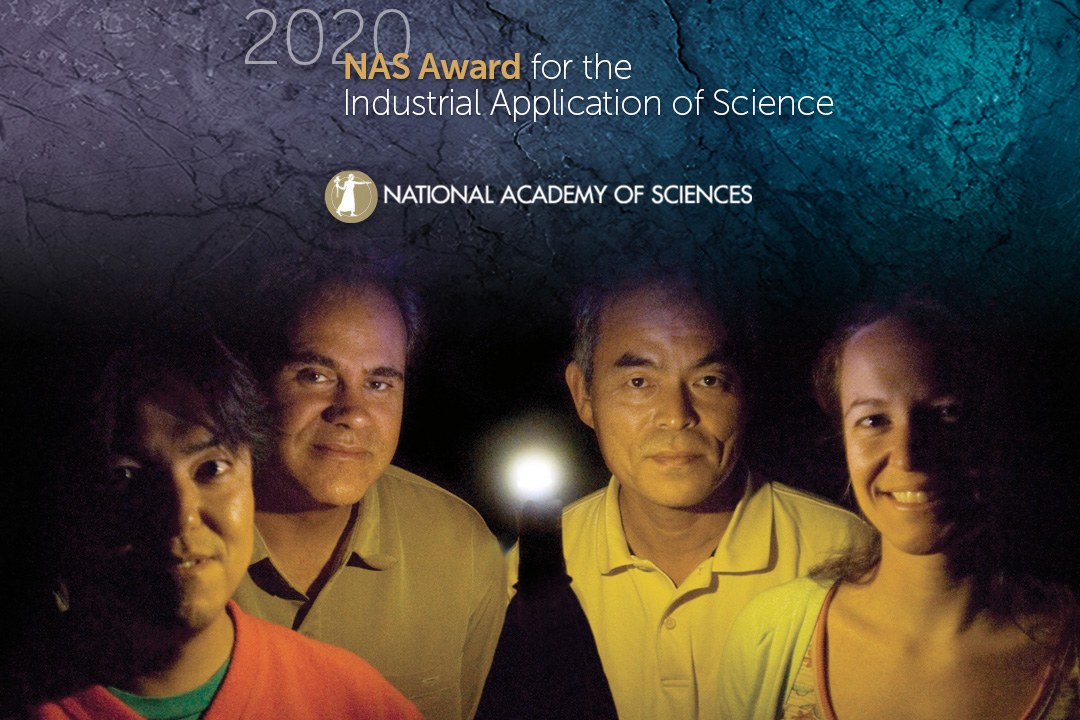Congratulation, Shuji Nakamura for Another Prestigious Award – The 2020 NAS Award
On April 26, the 2020 National Academy of Science (NAS) Award for the Industrial Application of Science was awarded to Shuji Nakamura, a professor in the department of materials at UC Santa Barbara (UCSB).
Nakamura has achieved world-changing developments in the field of light-emitting diodes. His revolutionary discoveries and commercial development of Gallium nitride LEDs have had enormous impacts on energy efficiency and conservation, reduced consumer and commercial electric costs, and dramatically reduced greenhouse gas emissions.
He is widely recognized for his invention of blue LEDs, new forms of white LEDs, and green LEDs. Together his discoveries have revolutionized many fields of technology, including solid-state lighting, displays, medicine and Blu ray optical storage. His breakthroughs have had application in everything from energy-efficient lighting to displays of all sizes, as well as air and water purification and chemical sensing.
Short History of a Success-Story:
When Isamu Akasaki, Hiroshi Amano and Shuji Nakamura produced bright blue light beams from their semi-conductors in the early 1990s, they triggered a fundamental transformation of lighting technology. Red and green diodes had been around for a long time but without blue light, white lamps could not be created. Despite considerable efforts, both in the scientific community and in industry, the blue LED had remained a challenge for three decades.
They succeeded where everyone else had failed. Akasaki worked together with Amano at the University of Nagoya, while Nakamura was employed at Nichia Chemicals, a small company in Tokushima. Their inventions were revolutionary. Incandescent light bulbs lit the 20th century; the 21st century will be lit by LED lamps.
White LED lamps emit a bright white light, are long-lasting and energy-efficient. They are constantly improved, getting more efficient with higher luminous flux (measured in lumen) per unit electrical input power (measured in watt). As about one fourth of world electricity consumption is used for lighting purposes, this invention contributes to saving the Earth's resources. Materials consumption is also diminished as LEDs last up to 100,000 hours, compared to 1,000 for incandescent bulbs and 10,000 hours for fluorescent lights.
Nakamura continues to innovate with his most recent work reducing the size of LED emitters down to 1 micron (Micro-LED), a development that will have major applications in energy-efficient smartphones and smartwatches.
The NAS Award for the Industrial Application of Science honors original scientific work of intrinsic scientific importance and with significant, beneficial applications in industry. The recipient is awarded a $25,000 prize. Established by the IBM Corporation in honor of Ralph E. Gomory.
A video - "UCSB Professor Shuji Nakamura Accepts Major Award from National Academy of Sciences" - can be viewed on YouTube - https://www.youtube.com/watch?v=35QKIisSUuk
Shuji Nakamura:
Shuji Nakamura was born on May 22, 1954, in Ehime, Japan. He received his B.E., M.S., and Ph.D. degrees in electrical engineering from the University of Tokushima, Tokushima, Japan, in 1977, 1979, and 1994, respectively. He joined Nichia Chemical Industries Ltd., Tokushima, Japan, in 1979. In 1988, he spent a year at the University of Florida, Gainesville, FL, USA, as a Visiting Research Associate. In 1989, he started the research of blue LEDs using group-III nitride materials. In 1993 and 1995, he developed the first group-III nitride-based blue/green LEDs. He also developed the first group-III nitride-based violet laser diodes (LDs) in 1995. Since 2000, he has been a Professor at the Materials Department, University of California Santa Barbara, Santa Barbara, CA, USA. He holds more than 300 patents and has published more than 400 papers.

